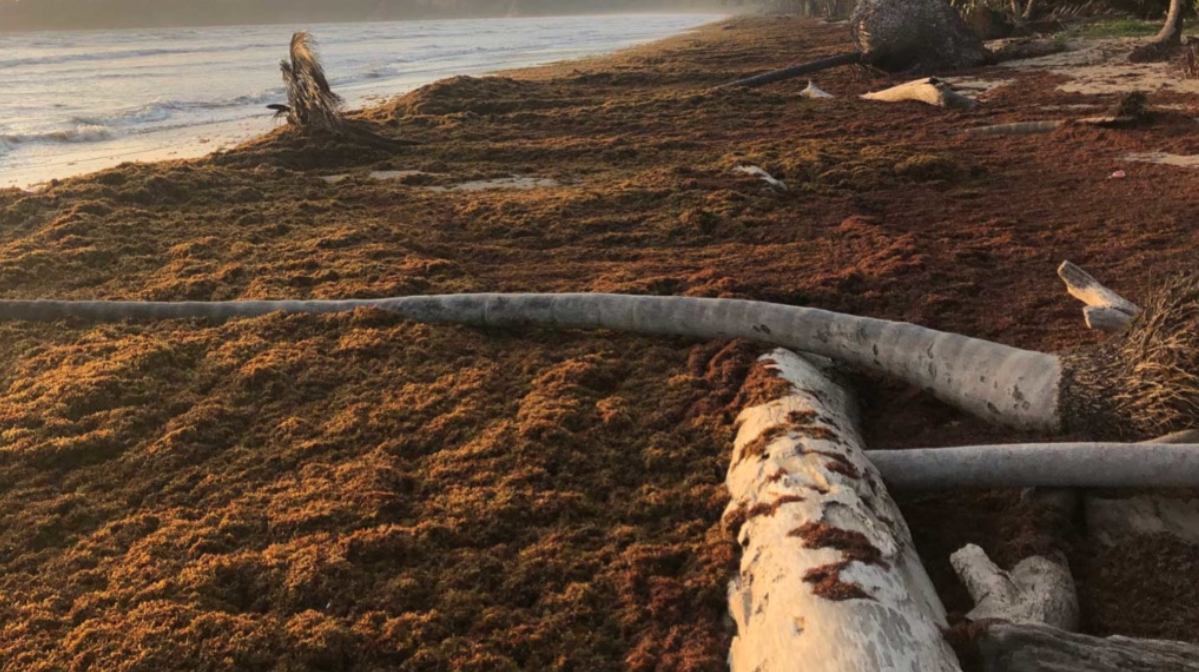Crawling across the Caribbean coastline and dumping the stench of decay wherever it washes ashore is a phenomenon that authors from Science Journal have dubbed the “Great Atlantic Sargassum Belt.” What’s more, one of its largest-recorded masses of sargassum seaweed is barreling towards Florida beaches along the Gulf of Mexico. In spite of frightening coverage—up to and including names right out of ‘50s B-movies like “the Sargassum blob”—New College Professor of Biology & Marine Science Sandra Gilchrist assures the campus that there’s very little to worry about. With that said, there are many unanswered questions about the Great Atlantic Sargassum Belt and it can be difficult to find conclusive answers in the white noise of sensationalized coverage.
According to the National Oceanic and Atmospheric Association (NOAA) Ocean Exploration website, Sargassum is a genus of brown seaweed marked by its distinctive buoyancy: instead of clinging to the sea floor, Sargassum drifts on the surface in island-like clumps and is kept afloat by gas-filled bladders that resemble berries. Notably, these Sargassum clumps serve as the primary habitat of the endangered loggerhead sea turtle, as well as nurseries for numerous breeds of fish such as mahi mahi and jacks.
The Sargassum Information Hub—an organization assisted by the University of South Florida (USF) College of Marine Science—reports that come 2011, Sargassum began to arrive in droves on Atlantic coastal communities. When beached, Sargassum’s pungent aroma attracts flies, repulses tourists and aggravates existing respiratory issues—characteristics shared with the irksome red tide that has been plaguing Sarasota shores.
Gilchrist has been involved with marine biology for nearly 50 years—40 of which have been spent with New College—and makes the case that the Great Atlantic Sargassum Belt isn’t all it’s cracked up to be.
“A ‘blob’ is a really bad word,” Gilchrist insisted. “It’s just a bloom, essentially, of this brown algae and recently, the blooms have been getting larger and apparently this is the largest one we’ve recorded. I don’t know for sure if they’re going to continue to get larger or if this is part of some cycle. Certainly, things like warming of the ocean gives a better chance for the blooms to occur.”
In spite of Gilchrist’s assurance, there’s something to be said for the Great Atlantic Sargassum Belt’s size in its 2023 incarnation: the bloom collectively spans an impressive 5,000 miles, and Sargassum buildup on beach fronts can quickly pile up to six feet.
In a somewhat refreshing twist after Hurricane Ian and two successive fits of red tide, Sarasota doesn’t seem to be part of the Great Atlantic Sargassum Belt’s trajectory.
“More than likely, it’s going to hit the south coast on the Atlantic side, and the Keys in my opinion,” Gilchrist said. “It’s not going to really wrap around very much on this side. It’s already diminishing.”
“We do occasionally get some Sargassum coming up on this side of Florida, but it’s usually a few clumps of material—not enough to cause respiratory issues or anything like that,” she concluded.

